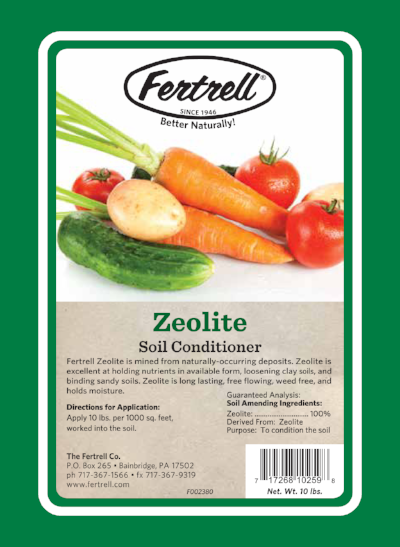One of the newest trends in organic agriculture is the use of Zeolite on fields and in fertilizer blends. Previously, we used Greensand in many of our fertilizer blends but the mine closed last year and we have been in search of a good replacement ever since. We turned to Zeolite this past year and we haven’t been disappointed. I’m going to get technical in this next paragraph, but then I’ll get back to layman terms after that.
Zeolite is an Aluminosilicate. That’s a big word to describe what makes up clay particles. It is very similar to Greensand in this respect. Because of its structure, Zeolite has the ability to loosely hold cations (Ca, K, NH4, etc.) in suspension but keep them available for plant uptake. Zeolite also has great potential to loosen heavy soils and increase water and nutrient holding capacity on sandy soil types. Again Zeolite is able to exchange these nutrients and store them in plant-available form. It is also able to exchange cations continuously without altering its own structure. Another really advantageous aspect to Zeolite is its ability to hold water. Zeolite can absorb 55% of its weight in water. Last technical fact- Zeolite has a very large surface area at 270 sq. ft. of surface area per gram of material. This provides a huge amount of surface area sites for mineral and nutrient exchange.
Why does all that technical stuff matter? Zeolite helps prevent compaction, first and foremost. That is a huge benefit to many of our customers who are looking to improve fields and pastures. Zeolite also increases water and nutrient infiltration and increases aeration of the soil. This is due to its structure adding pore space and its high surface area content. This is really important for soils and soil microbial life. To make healthy soils we need things like Zeolite to help us. In addition to helping with compaction, Zeolite has a high CEC (cation-exchange capacity) and a large surface area which helps to control ammonia in manures. It holds ammonia in its structure in ammonia form so when the manure is applied to land it may be taken up by plants instead of leeching or volatizing. Overall, we are really pleased with Zeolite as a replacement for greensand. We are using it in our fertilizer blends and we are carrying it in individual bags.
Questions? Contact us:
Orin@Fertrell.com & Dean@Fertrell.com
Interested in seeing our catalog? 
Orin is on the agronomy team at Fertrell. Specializing in row crops and larger farming ventures on the soils side, he runs a 50-cow organic dairy farm as well.

